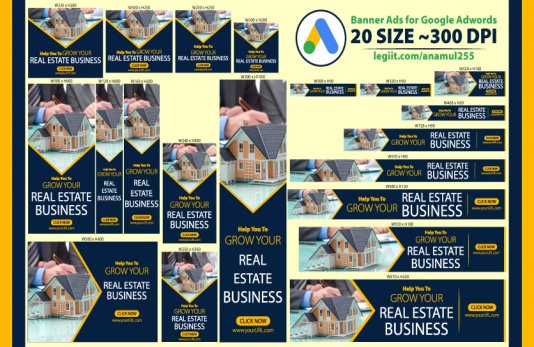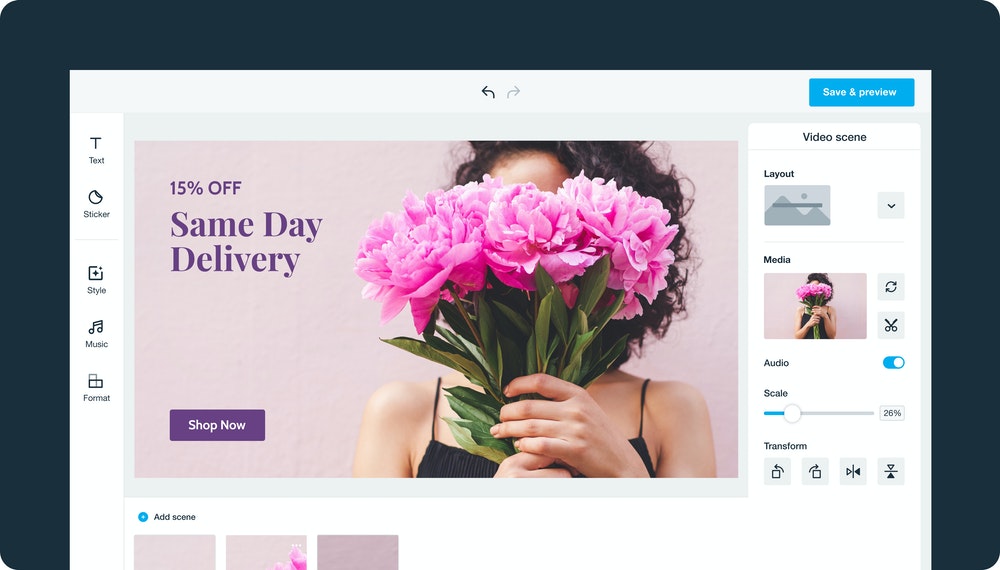
The price of advertising space you want to buy is something you need to consider before buying it. The price you will pay depends on many factors including the industry average, your pricing model, and the number of page views or ad clicks you receive. These factors can make a huge difference in your earning potential.
Cost per thousand
The cost per thousand of ads on websites is a way to measure the effectiveness of digital marketing. This compares the potential revenue generation potential of an advertisement with its cost. It shows the advertiser's spend for each 1,000 impressions. Clickthroughs are also included. An advertiser with a budget of $500 will receive approximately 150,000 impressions each month.
CPM is an effective way for small businesses to raise brand awareness. It is also one of the most inexpensive forms of online advertisement. However, this method can result in fewer conversions to actual sales.
Cost per click
Advertisers use cost per click (or CPC) to determine the effectiveness of their advertising campaigns. This is calculated by multiplying clicks by impressions. It gives advertisers an idea of how effective their keywords and ads are, and is a great way to measure the return on investment of your ad budget.

Cost per click refers to the money that the advertiser pays each time someone clicks their ad. The amount paid for each click depends on the industry or product. Most businesses can accept a click cost between $10 and $20.
Cost per mille
Digital ads can be measured by their CPM (cost per thousand). CPM is calculated by multiplying the amount of money paid by the advertiser by the number of impressions received. Using this method allows marketers to better understand the effectiveness of their ads and improve their marketing outcomes.
CPM refers to the price an advertiser will pay for every 1,000 views of an ad on a web page. It is used frequently in marketing campaigns, especially online. Advertisers typically pay a percentage of the total audience per thousand views.
CTR
When visitors interact with advertisements, websites earn revenue. This happens through clicks, impressions, and engagements. If a visitor clicks on banner ads, the website owner will make 20 cents. The publisher will earn $10 per day if the website gets 500 clicks per day or $300 per month if the site receives 300 clicks per day. Understanding key advertising terms is the first step towards calculating website ad revenue. These terms will help you determine how to charge for your ads and how to track the success of your advertisements.
Publishers use the cost per click (or CPC rate) as a common metric. While it can vary by niche, the average CPC rate is between $30 and $50. CPC rates in fashion and finance websites will generally be higher.

Affiliate marketing
Affiliate marketing involves a revenue-sharing arrangement between a website (or product or service seller) and the affiliate marketer. Affiliate marketers promote the product or service in order to attract customers. In return, the website gets a commission. Affiliates are often targeted by a particular audience or interest group. Some work as personal brand owners.
Most affiliate marketing methods depend on driving traffic for a website and encouraging customers who see it to take action. In a saturated market, organic traffic, although beneficial, is not sustainable. Some affiliates make use of pay-per-click programs (PPC), which pay them to direct customers to a product/service.
FAQ
What is an ad-campaign?
An advertising campaign is a series of advertisements designed to promote a product or service. This could also include the entire production of these ads.
The Latin word for "to Sell" gives rise to the term "ad". Marcus Terentius Varro (116–27 BC) was the first person to use it. It meant "to sell".
Advertising campaigns are usually done by large companies and agencies. There may be many media types involved, including print and television as well as radio, TV, and internet.
Advertising campaigns are typically long-lasting and have clear goals. Some campaigns are designed to increase awareness, while others aim to increase sales.
What do you need information about print advertising
Print advertising is an effective medium for communicating with consumers. Print advertising is used by many companies to promote their products and services. The key objective is to capture the attention of the consumer.
Print ads are usually short (one page) and contain text, pictures, logos, and other graphics. They may also include sound, animation, video, and hyperlinks.
These are the main types of print ads:
1. Brochures – These are large format printed pieces that are intended to draw people into stores. Brochures are filled with eye-catching designs, colorful pictures, and attractive graphics.
2. Catalogues: These are smaller versions or brochures. These are often sent to customers who have asked for information on particular items.
3. Flyers - These small pieces of paper are distributed at events like fairs and concerts. Flyers can be handed out at retail outlets for a small fee, but are generally free.
4. Flyers are also available in posters. They can be displayed on fences, walls, or buildings. They are usually made using computer software programs, which is designed to draw the eye of passersby.
5. Direct mail: These are postcards or letters that are sent directly by post to potential customers. These are sent out by companies to remind customers about their business.
6. Newspaper Ads - These advertisements are found in newspapers and magazines. These are typically quite long and often contain text as well images.
What is an advertiser buyer?
Advertisers buy advertising space on television, radio, and print media.
An advertiser pays for the time they want their message to appear.
They don't necessarily look for the best advertisement, but instead seek out the most effective way to reach their target market.
Advertisers may have demographic information such as the age, gender, marital status, income level, occupation, hobbies, and interests of their customers.
This information can be used by advertisers to decide which media works best for them. An example is direct mail that appeals to older people.
Advertisers also consider the competition. Advertisers will look at the competition to see if similar businesses are nearby.
Advertisers should also consider how much money they have available and how long it takes to use it.
What is branding?
Branding is a way to communicate who and what you are. It is how people remember your name.
Branding is about creating a memorable brand identity for your company. Branding is more than a logo. It encompasses everything, from the physical appearance of your company to the voice and tone used by your employees.
Customers feel more confident buying from your company if they have a solid brand. They know what they're getting. It gives customers confidence when choosing your products over the ones of other competitors.
Apple is a good example of a company that has a strong brand. Apple's brand is well-known for its stylish design, high-quality products and outstanding customer support.
Apple's brand is synonymous with technology. Apple is synonymous with technology.
Before you launch a new business, it is worth creating a brand. This will give you and your business a face.
What is advertising's basic purpose?
Advertising isn’t about selling products.
Advertising is about communicating your ideas and values to people who already care about what you have to say. It's about changing minds and attitudes. It's about building trust.
It is all about making people feel good.
However, if your customers don't want what you have to offer, you won't be able to sell anything.
Prior to you begin any advertising project, make sure you understand your customer's buying habits and needs.
This will allow you to create ads that resonate with your target audience.
Is it possible for traffic to be free?
Free Traffic refers to the traffic that comes directly from organic search results without paying for ads. This is also known as organic or natural traffic. There are many methods to obtain free traffic such as article marketing or social media marketing.
Article Marketing is one of the most popular methods of getting free traffic because articles have an extremely low cost per click (CPC). Paying ads can be more costly than CPC. Article marketing is also called content marketing.
Social Media Marketing – Social media platforms like Facebook, Twitter and LinkedIn let you promote your business via advertising. These platforms allow you to share updates, photos, and establish relationships with potential customers. Many businesses choose to buy ad space in social media because they want a wider reach at a reduced price.
Blogging - Blogging is another great way to generate free traffic. High quality content will draw people to your blog. You can start to monetize your blog with the sale of products or services after you have attracted readers.
Email Marketing – Although email marketing was around long before the internet, it's still one of most effective ways to drive website traffic. You can grow your list and eventually sell to subscribers by sending them emails frequently.
How can I select my target audience?
Start with yourself and those close to you. If you don’t know where or how to start, ask yourself "Whom are I trying to reach?"
Ask yourself the following questions: Who are my industry's most influential people? What are their daily problems? Who are my top-ranking people? They hang out online.
Rewind to the beginning, when your business was founded. What was your motivation for starting? What was your problem and how did it solve?
These answers will help identify your ideal clients. This will allow you to learn more about your ideal customers and their motivations for buying from you.
You can also look at your competitors' websites and social media pages to find clues about whom they cater to.
Once you have identified the target customers, it is time to decide what channel(s) you want to use to reach them. For example, if your company provides services to real estate agents, you might create an informational website targeting home buyers.
You could create a blog if you offer software to small business owners.
You could also create a Facebook account for teens if you sell clothing. For parents who are looking for child-friendly restaurants, you might set up your own Twitter account.
The important thing is that you have many options for getting your message across.
Statistics
- Nonetheless, advertising spending as a share of GDP was slightly lower – about 2.4 percent. (en.wikipedia.org)
- Google will display whichever ad type (CPM or CPC) is expected to earn more revenue for the publisher, which is in Google's best interest since they take a 32% share of the revenue. (quicksprout.com)
- In 1919 it was 2.5 percent of gross domestic product (GDP) in the US, and it averaged 2.2 percent of GDP between then and at least 2007, though it may have declined dramatically since the Great Recession. (en.wikipedia.org)
- This means that at least 50% of an ad needs to be shown on the screen for at least one second. (quicksprout.com)
External Links
How To
What is the best way to advertise on Google?
AdWords, Google's advertising platform, allows businesses to buy ads based upon keywords they wish to target. Your account is the first step. Select a campaign name and set the budget. Choose the ad type (text or image), and add keywords. Then you bid on those keywords. Clicking on an advertisement will only result in you being paid if the click is from someone who searched one of your targeted keyword phrases. This ensures that you are paid even if people do not buy anything.
Google offers many tools to ensure your ads are successful. These tools include Ads Preferences Manager Manager, Keyword Planner and Analytics. These let you determine which strategy is best for you business.
A keyword planner allows you to determine the best keywords to use in your campaigns. It can help you decide whether or no to spend money on certain keywords.
Ads Preferences Manager is available to alter settings such as maximum number of impressions per calendar day and minimum cost per click.
Analytics allows you to monitor the performance and compare your ads to other competitors. Reports can be viewed that compare your ads to others.